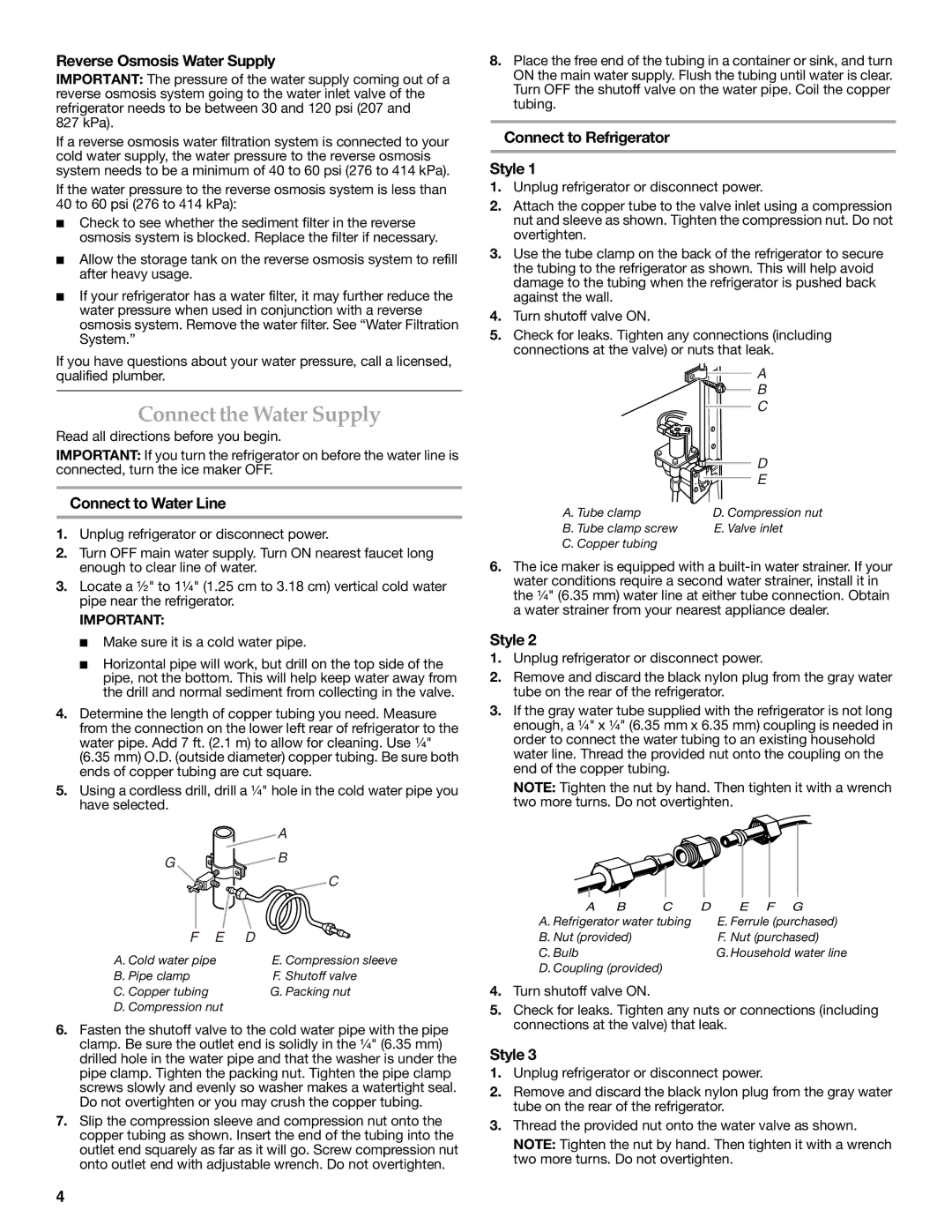KTRC22KVSS specifications
The KitchenAid KTRC22KVSS refrigerator stands out as a robust and stylish addition to any modern kitchen. With its sleek stainless steel exterior, this model not only offers functional benefits but also elevates the aesthetic appeal of your space. Designed with precision and user convenience in mind, the KTRC22KVSS combines innovative technologies and thoughtful features that cater to the needs of contemporary households.One of the standout features of the KTRC22KVSS is its impressive temperature management system. Equipped with a state-of-the-art cooling system that ensures consistent temperatures throughout the refrigerator and freezer compartments, this model minimizes temperature fluctuations that can impact food quality. The ExtendFresh Temperature Management System uses advanced sensors to regulate temperature and humidity, creating an ideal environment for produce and other perishables.
The refrigerator boasts a generous capacity of 21.9 cubic feet, providing ample space for groceries, leftovers, and beverages. Its interior is thoughtfully designed with adjustable shelves, allowing for flexibility when organizing items of various sizes. The glass shelves offer easy visibility and quick access to your food items, while the humidity-controlled crisper drawers keep fruits and vegetables fresh for longer periods.
In terms of organization, the KTRC22KVSS features a specialized dairy compartment and door bins that can accommodate taller bottles, ensuring everything stays in its place. The Spill-Catcher shelves not only contain spills for easy cleanup but also help to prevent cross-contamination.
In addition to its robust storage capabilities, the KitchenAid KTRC22KVSS incorporates energy-efficient technologies. Energy Star certified, it helps reduce energy consumption without sacrificing performance. The refrigerator also includes LED lighting that illuminates the interior while using less energy than traditional lighting options.
Furthermore, the exterior of the refrigerator is equipped with prints resistant finish, which makes cleaning a breeze and helps maintain a spotless appearance even in the busiest kitchens.
In summary, the KitchenAid KTRC22KVSS refrigerator is a notable choice for those seeking a blend of style, functionality, and innovative technology. With features such as advanced cooling systems, customizable storage options, and energy efficiency, it is designed to meet the demands of modern lifestyles while keeping food fresher longer.

